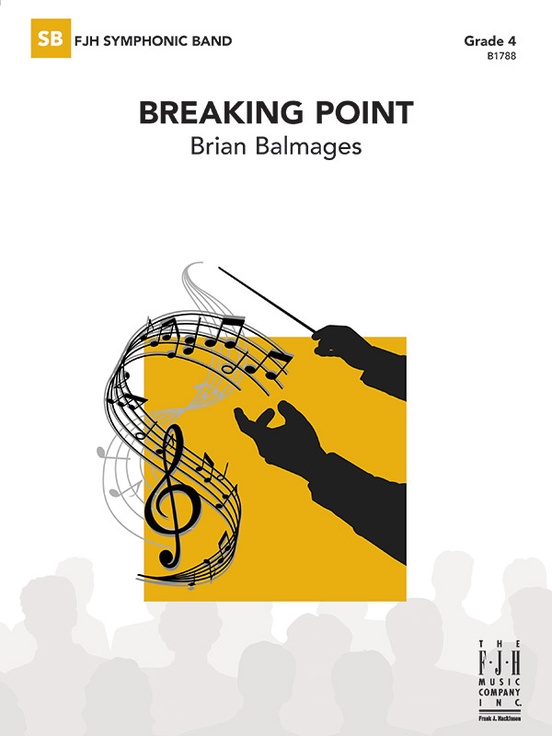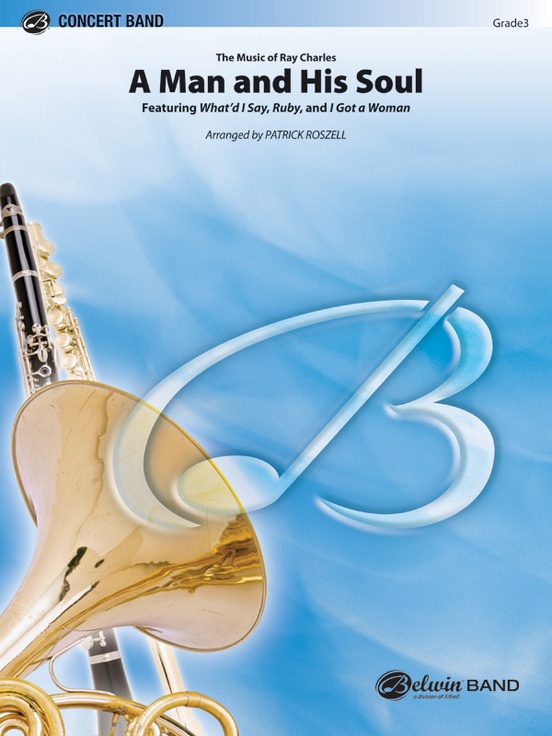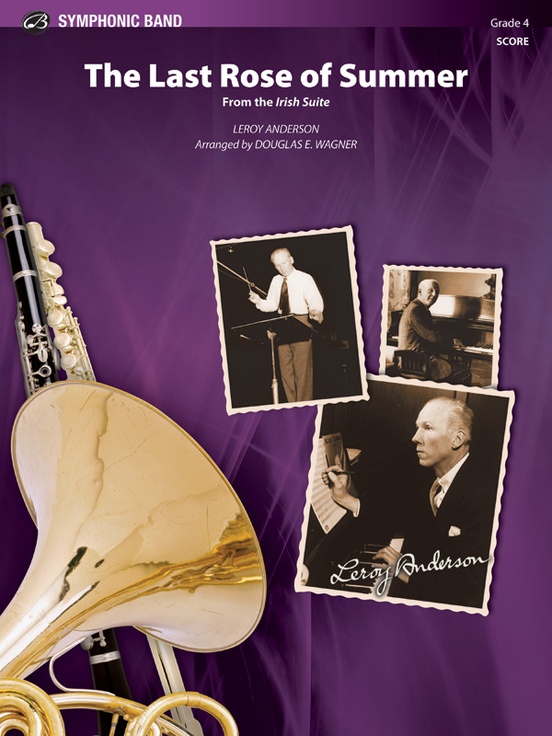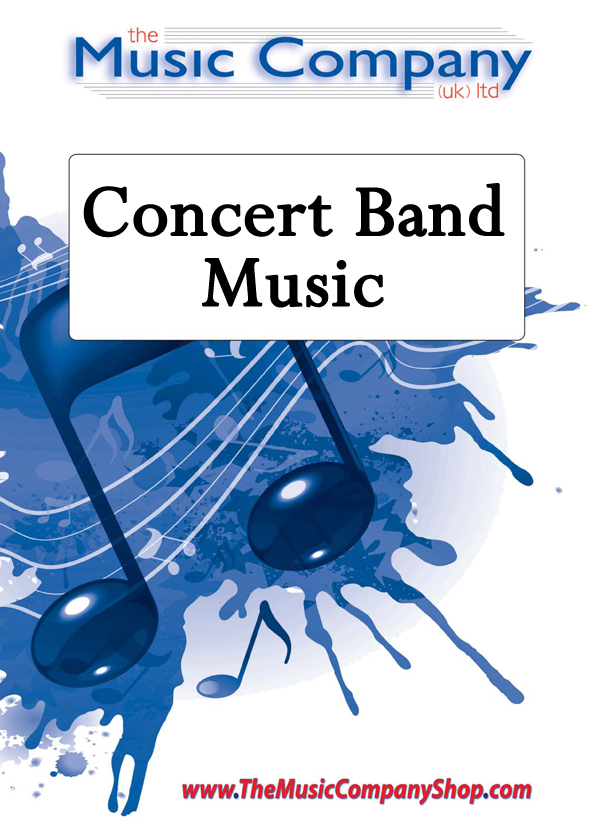Results
-
 £73.50
£73.50A Man and His Soul (The Music of Ray Charles) (Concert Band - Score and Parts) - Roszell, Patrick
Legendary musician Ray Charles is remembered in this medley entitled A Man and His Soul. Featuring the up tempo classic "What'd I Say," the beautiful and lush "Ruby," and the gospel infused "I Got a Woman," this arrangement scored by Patrick Roszell is guaranteed to entertain your audience.Duration: 4.45
Estimated dispatch 7-14 working days
Audio Player -
 £137.99
£137.99ABBA Magic! (Concert Band - Score and Parts) - Andersson & Ulvaeus - Schwalgin, Stefan
In this fantastic medley, Stefan Schwalgin has used nine of Abba's timeless hits to produce a piece, which demonstrates the wide-ranging repertoire of this timeless Swedish group. The alternating instrumentations and atmospheres guarantee a varied, sparking piece, which is certain to have your audience singing along.Includes:WaterlooS.O.S.Happy New YearSo LongMoney, Money, MoneyHasta MananaMamma MiaI Do, I Do, I DoThank you for the MusicDuration: 8.15
Estimated dispatch 7-14 working days
Audio Player -
 £59.95
£59.95www.winds.com (Concert Band - Score and Parts) - Fraser, Bruce
The idea for this work came from listening to my modem while logging on to the Internet. I realize that some modems log on silently, but the opening of this work imitates the tones and burbling noises of a modem or fax. There were two musical features I picked our - the pitches of the dialing tones are subsequently used to create the melodies, and the syncopated falling octave figure is used in accompaniment figures. The opening Allegro will work at a faster tempo if desired, but make sure that clarity is maintained. The middle section should be carefully balanced and allowed to flow.
Estimated dispatch 7-14 working days
Audio Player -
 £11.95
£11.95www.winds.com (Concert Band - Score Only) - Fraser, Bruce
The idea for this work came from listening to my modem while logging on to the Internet. I realize that some modems log on silently, but the opening of this work imitates the tones and burbling noises of a modem or fax. There were two musical features I picked our - the pitches of the dialing tones are subsequently used to create the melodies, and the syncopated falling octave figure is used in accompaniment figures. The opening Allegro will work at a faster tempo if desired, but make sure that clarity is maintained. The middle section should be carefully balanced and allowed to flow.
Estimated dispatch 7-14 working days
Audio Player -
 £98.50
£98.50Breaking Point - Brian Balmages
Written over a several month period when the composer's father was dying, the composer states: "Throughout this entire experience, I have reached my own breaking point. Over and over again. So I fall apart, put myself together, and am then broken all over again." One of the most emotional and powerful pieces Balmages has ever written, there are moments of untamed beauty, anger, rage, hope, despair, and frustration. Once you perform this one, you will never forget it.
Estimated dispatch 3-5 working days
Audio Player -
 £73.50
£73.50A Man and His Soul
Legendary musician Ray Charles is remembered in this medley entitled . Featuring the up tempo classic "What'd I Say," the beautiful and lush "Ruby," and the gospel infused "I Got a Woman," this arrangement scored by Patrick Roszell is guaranteed to entertain your audience.
Estimated dispatch 3-5 working days
Audio Player -
 £73.50
£73.50The Last Rose of Summer (from the ) - Leroy Anderson / arr. Douglas E. Wagner
The fifth movement of Leroy Anderson's The Irish Suite, "The Last Rose of Summer," has never been transcribed for concert band. Skillfully scored by Douglas Wagner in Anderson's charismatic characteristic style, this work features an emotional alto saxophone solo in place of the orchestra version's violin solo. This dramatic work is performable as a stand-alone work or in tandem with the rest of the movements. All movements are now available: I. "The Irish Washerwoman" [00-83181], II. "The Minstrel Boy" [00-32547], III. "The Rakes of Mallow" [00-30836], IV. "The Wearing of the Green" [00-30835], V. "The Last Rose of Summer" [00-32545] and VI. "The Girl I Left Behind" [00-32546].
Estimated dispatch 3-5 working days
Audio Player -
 £55.00
£55.00Merry-Go-Round - Tim Paton
Programme notes from the composer, Tim Paton:I heard a recording of a fairground organ playing a fabulous concert waltz from the early 20th century. It struck me that this music was in the same league as another popular concert waltz, "Nights of Gladness". I aurally transcribed it, and set about creating an exciting piece, aiming to capture the 'fun of the fair'.
In stock: Estimated delivery 1-3 days
-
 £119.99
£119.99Rotterdam 1945 - Johan de Meij
Rotterdam 1945 was written at the request of Maestro Arjan Tien, the chief conductor of the Marine Band of the Royal Netherlands Navy, to commemorate their 75th anniversary in 2020. 1945 also marked the end of World War II, the year that my home country Holland was liberated from Nazi Germany. My father was born in Rotterdam in 1910, so I have a special bond with this dynamic city. I have used the numbers 1-9-4-5 to create the main theme and translated it into a four-note motif: C - D'- F - G.
Estimated dispatch 7-14 working days
-
 £89.99
£89.99Coast to Coast: An American Musical Road Trip
Travel across the country from New York to San Francisco and points in between, as this medley drives you through some of the best-known songs about U.S. cities and states in just a few minutes! Just be sure to hold onto your seat. Though the ride begins with a smooth cruise, there are a few tricky curves in the road ahead, and maybe even an Easter egg or two. Featuring: The Sidewalks of New York My Kind of Town (Chicago Is) Kansas City, Here I Come The Yellow Rose of Texas Viva Las Vegas I Left My Heart in San Francisco.
Estimated dispatch 7-14 working days
